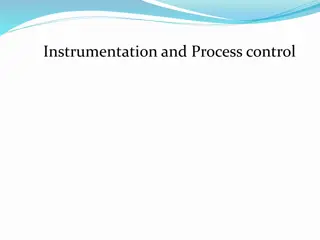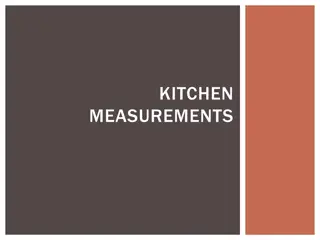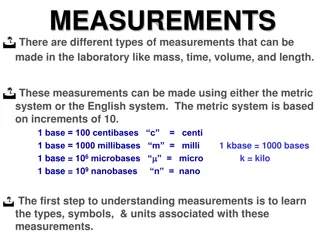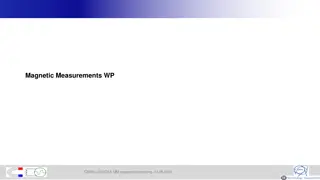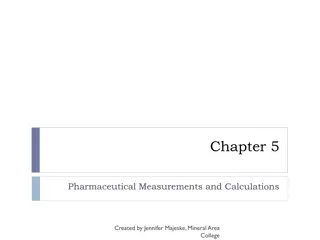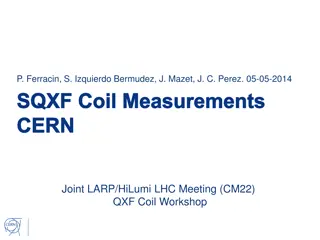Importance of Measurements in Society
Measurements play a crucial role in society's proper functioning, involving units like ounces, pounds, inches, and cups for accuracy. Customary and metric systems are compared for distance, area, volume, weight, and temperature. Measuring equipment like liquid measuring cups ensures precise measurements. Explore the significance of measurements in everyday life and various essential things that rely on accurate quantification.
Download Presentation

Please find below an Image/Link to download the presentation.
The content on the website is provided AS IS for your information and personal use only. It may not be sold, licensed, or shared on other websites without obtaining consent from the author. Download presentation by click this link. If you encounter any issues during the download, it is possible that the publisher has removed the file from their server.
E N D
Presentation Transcript
KITCHEN MEASUREMENTS
LIST AT LEAST 3 THINGS THAT ARE MEASURED IN THE WORLD THAT ARE ESSENTIAL FOR SOCIETY TO FUNCTION PROPERLY.
TERMINOLOGY Measure: A unit or standard of measurement. Measurements: Units of measure related to a profession. These include ounces, pounds, inches, feet, cups, teaspoons, etc. Accuracy: The extent to which a given measurement agrees with the standard value for that measurement. The correctness of the measurement made.
TERMINOLOGY Customary Measurements: In the United States we use customary measures. These include ounces, pounds, inches, feet, cups, teaspoons, etc. Metric Measurements: The metric system is the measurement system used all over the world. Units of measuring in metric include gram, liter, milligram, meters, centimeters, etc.
CUSTOMARY SYSTEM OF MEASURE The system of weights and measures based on the foot and pound and second and pint that dates back to colonial America. To measure distance: inch, foot, yard, mile To measure area: acre, any distance squared To measure volume: tablespoon, teaspoon, cup, fluid ounce, pint, quart, gallon To measure weight (mass): pounds, ounces To measure temperature: Fahrenheit
METRIC SYSTEM OF MEASURE A decimal system of weights and measures, universally used in science, and the official system of measurement in many countries. To measure distance: millimeter, meter, kilometer To measure area: square meter, hectare, square kilometer To measure volume: milliliter, cubic centimeter, liter, cubic meter To measure weight (mass):milligram, gram, kilogram, metric ton To measure temperature: Celsius
LIQUID MEASURING CUPS Markings on a 1 cup includes: 2, 4, 6, 8 fluid ounces and c., 1/3 c., c., 2/3 c., c., 1 c.
LIQUID MEASURING CUPS Always measure at eye level to ensure an accurate pour. Use the meniscus as the line of measure.
DRY MEASURING CUPS Set includes: 1 cup, cup, 1/3 cup, and cup Used to measure dry ingredients What does dry mean? Examples
DRY MEASURING CUPS Always fill to the top of the cup and level off with a flat edge Do not heap ingredients into the cup!
MEASURING SPOONS IN A MEASURING SPOONS IN A STANDARD SET STANDARD SET teaspoon teaspoon 1 teaspoon 1 Tablespoon (1 Tablespoon = 3 Teaspoons) Used to measure small amounts of dry and liquid ingredients Examples? Always measure dry ingredients first Why? 13
MEASURING SPOONS MEASURING SPOONS Tips Don t dip into the container to fill spoon Instead, pour liquid into the spoon Fill to the top of the spoon Liquid should be level with the tops of the spoon for an accurate measure.
MEASURING SPOONS MEASURING SPOONS DO NOT USE: Silverware from the table for measuring. It is not accurate, as many spoons are different sizes for measuring
THERMOMETERS Refrigerator, Freezer and Oven Candy or Frying Meat Instant-Read Probe
THEMOMETERS Use the right thermometer for the right task Make sure the tip is in the item being temped out and does not poke through the food.
SCALES Digital Food Scale Balance Weight or Baker s Food Scale Portion Food Scale
YOUR HANDS Your hands are used to measure ingredients that are: single items such as a banana or apple bunches of items like nuts, grapes.
WRAPPERS Tablespoons and cup portions are provided on labels. Carefully make cuts across the mark for accurate portions.
TO ENSURE ACCURACY Use only standard measuring cups and spoons. Any recipe you follow has been tested with standard equipment. Do not mistake fluid ounces for ounces. Ounces measure weight and fluid ounces measures volume.
TIPS FOR MEASURING ACCURACY Never measure over a bowl containing other ingredients. You may accidentally tip the measuring device or over pour the ingredients and excess ingredients would fall into the mixture. This could ruin the whole batch, depending on the ingredient and how much was spilled Measure over the sink, a separate bowl, or a sheet of waxed paper to catch the spillage. Extra ingredients can be poured back.
3-2-1 On your post-it Write down 3-things you learned 2-things you want to learn 1-thing you are still confused about
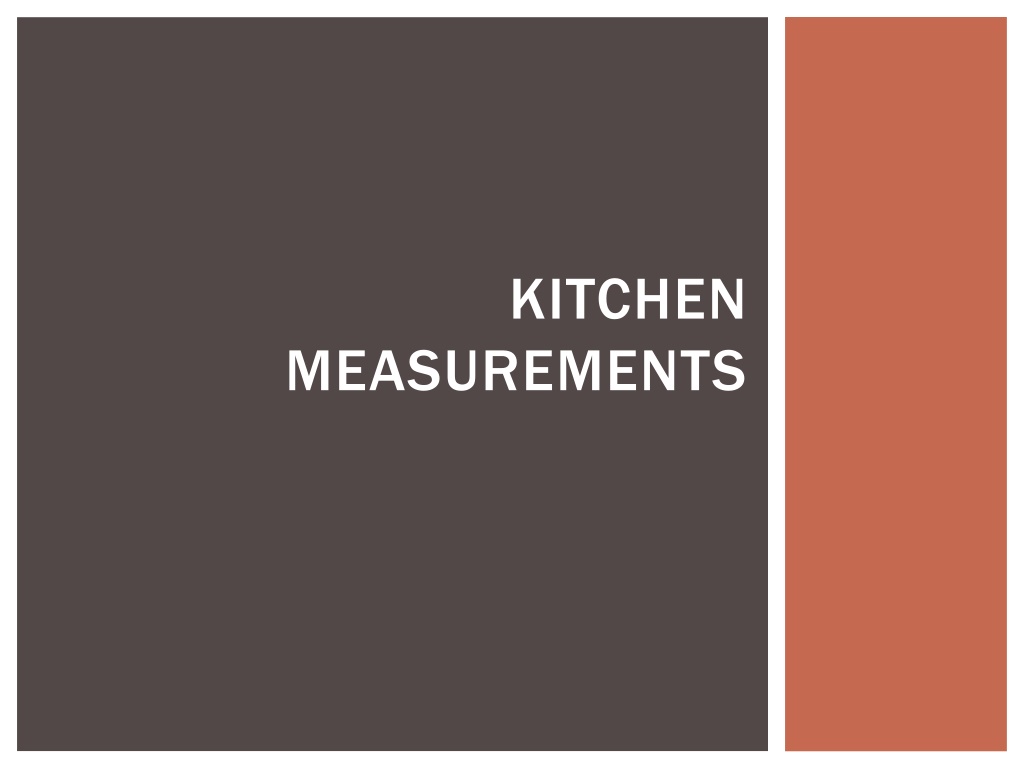
 undefined
undefined








